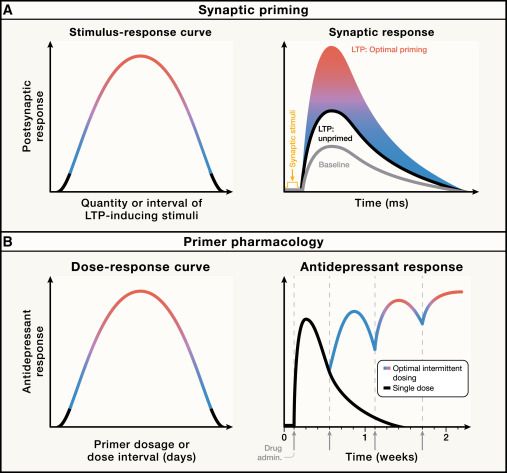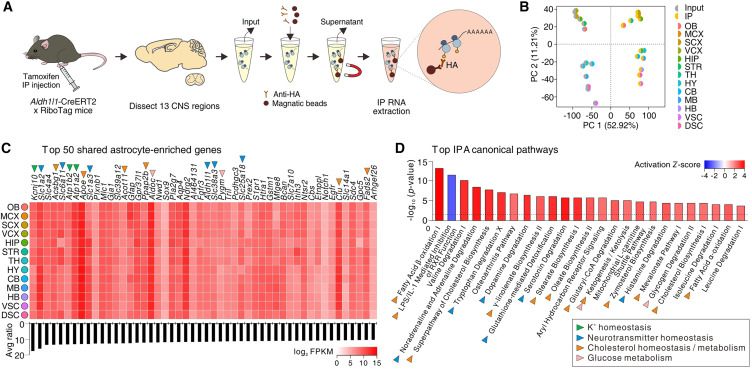Neuron
@cp-neuron.bsky.social
1.1K followers
26 following
230 posts
Neuron publishes ground-breaking research papers, reviews & commentary across neuroscience and is a premier intellectual forum for the neuroscience community.
https://www.cell.com/neuron/home
Posts
Media
Videos
Starter Packs
Pinned
Neuron
@cp-neuron.bsky.social
· 12h

Synaptic priming: A framework for pharmacotherapy in depression
Through the perspective of metaplasticity, Brown et al. examine the therapeutic effects of intermittent ketamine administration and explore how targeting spatiotemporal features of antidepressant dosing and environmental conditions may improve the effectiveness of treatments for depression.
dlvr.it
Neuron
@cp-neuron.bsky.social
· 12d
Within-individual precision mapping of brain networks exclusively using task data
Du et al. demonstrate that task data alone can map the detailed organization of within-individual brain networks. Applications include reanalysis of existing data, pooling of task and resting-state data to increase statistical power, and studies that solely acquire task data to simultaneously estimate brain networks and extract the evoked response.
dlvr.it
Neuron
@cp-neuron.bsky.social
· 14d

Dysfunction of cortical GABAergic projection neurons as a major hallmark in a model of neuropsychiatric syndrome
Using advanced transcriptomic and physiological profiling, the authors identified deep-layer long-range GABAergic projection neurons as the most disrupted neuronal subtype and key contributor to brain dysfunction in the 15q13.3 neuropsychiatric mouse model. Late-onset impairments in these neurons disrupted sleep, which was rescued by chemogenetic inhibition, offering mechanistic insight and therapeutic potential.
dlvr.it
Neuron
@cp-neuron.bsky.social
· 16d

Reproducible Brain Charts: An open data resource for mapping brain development and its associations with mental health
Shafiei et al. introduce Reproducible Brain Charts (RBC), an open, reproducible developmental neuroimaging resource combining data from five large cohorts of youth. They provide harmonized psychiatric phenotypes, curated raw data, and uniformly processed derived imaging data. All data and processing pipelines are openly shared without a data use agreement.
dlvr.it
Neuron
@cp-neuron.bsky.social
· 19d

Neural mechanisms underlying the recovery of voluntary control of motoneurons after paralysis with spinal cord stimulation
Spinal cord stimulation (SCS) restores voluntary motor control after paralysis, but this experimental observation remains unexplained. In this study, Balaguer et al. show that residual brain inputs transform subthreshold, SCS-mediated excitatory postsynaptic potentials into action potentials, producing SCS-entrained motoneuron firing. The brain can regulate this entrainment, thereby mimicking volitional firing rate control.
dlvr.it
Neuron
@cp-neuron.bsky.social
· 20d

Ultrabright chemical labeling enables rapid neural connectivity profiling in large tissue samples
Mapping mammalian neural circuits is limited by inefficient labeling and signal loss with depth. Zhong et al. develop LINCS, a chemical labeling toolkit for rapid, ultrabright neural visualization. This accessible pipeline provides robust and uniform connectivity analysis, from single neurons in cleared brains to circuits spanning the entire mouse body.
dlvr.it
Neuron
@cp-neuron.bsky.social
· 20d

On astrocyte-neuron interactions: Broad insights from the striatum
In this review, Khakh discusses the mechanisms, physiology, and pathophysiological relevance of astrocyte-neuron interactions across biological scales from molecules to whole organisms. By highlighting findings from the striatum, Khakh identifies insights of significance to other brain areas and summarizes key open questions and challenges.
dlvr.it
Neuron
@cp-neuron.bsky.social
· 21d

Identification of a neural basis for energy expenditure in the mouse arcuate hypothalamus
Wang et al. demonstrate that hypothalamic GABAergic Crabp1 neurons promote energy expenditure by targeting multiple nuclei in mice. These neurons are activated by cold and exercise but suppressed by long photoperiod, linking environmental and physiological cues to metabolic homeostasis and offering a potential target for obesity intervention.
dlvr.it
Neuron
@cp-neuron.bsky.social
· 21d

Variation in moment-to-moment brain state engagement follows a consistent trajectory during development
Ye et al. demonstrate a consistent developmental trajectory for variability in recurring brain state engagement (SEV) across four independent datasets (N > 3,000). SEV increases with age before plateauing in adolescence, with female participants reaching stabilization before male participants. SEV further predicts executive function (EF) in previously unseen individuals.
dlvr.it
Neuron
@cp-neuron.bsky.social
· 21d

The role of mesolimbic circuitry in aversive signaling and opioid dependence
This review examines how chronic opioid use reshapes medial ventral tegmental area circuits, increasing sensitivity to aversive stimuli, amplifying negative affect, and reinforcing withdrawal-avoidance behaviors that drive opioid misuse. It also explores how chronic pain may exacerbate these effects through heightened aversive signaling, further increasing misuse risk.
dlvr.it
Neuron
@cp-neuron.bsky.social
· 22d
The how and why of sleep: Motor theory and catecholamine hypothesis
This perspective examines sleep’s mechanism (“how”) and function (“why”). The motor theory posits that sleep is governed by distributed motor-control circuits; the catecholamine hypothesis identifies catecholamine inactivation as the unifying process underlying sleep’s restorative effects on metabolism, immunity, and cognition.
dlvr.it
Neuron
@cp-neuron.bsky.social
· 25d

Corticotropin-releasing hormone signaling from piriform cortex to amygdala mediates social homophily in opioid addiction
Huo et al. report that opioid-withdrawn mice prefer socializing with opioid-experienced peers, driven by heightened social motivation and mediated by a specific brain circuit, APIRCRH-BMA, activated by peer odor. This social homophily promotes relapse by strengthening addiction-related memories. Social support from non-addicted peers or blocking this pathway aids recovery.
dlvr.it
Neuron
@cp-neuron.bsky.social
· 26d

A rare genetic variant confers resistance to neurodegeneration across multiple neurological disorders by augmenting selective autophagy
In Croce et al. the discovery of a rare SNP in the Venezuelan HD kindreds that is associated with a delayed age of onset of up to 23 years reveals how preventing aberrant protein accumulation is protective not only against polyglutamine toxicity but also against α-synuclein- and tau-mediated toxicity.
dlvr.it













